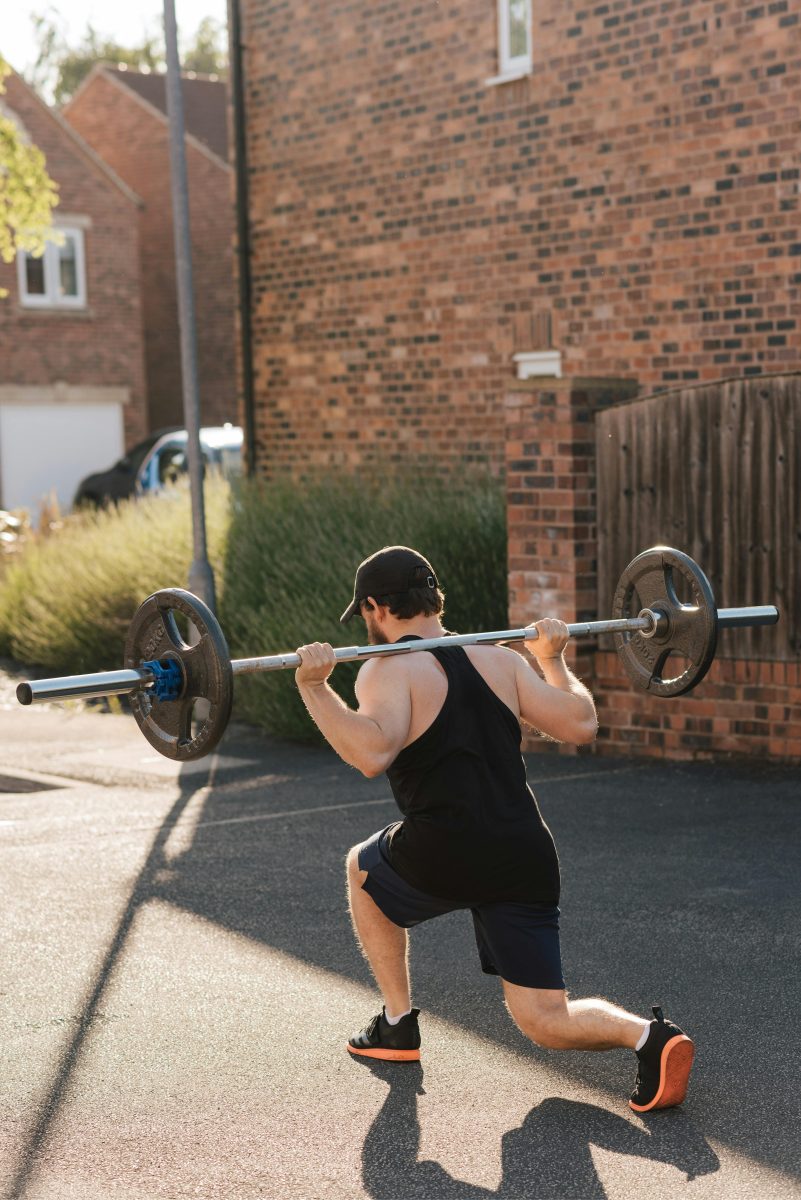Last Updated on: 14th July 2024, 09:06 am
Introduction to Plyometric Training

Plyometric exercises, often termed as “jump training” or “plyos,” are designed to increase muscular power and explosiveness. Through a sequence of rapid stretching and contracting of muscles, these exercises propel the body with maximum force in short intervals. The roots of plyometric training trace back to the 1960s, originating in the Soviet Union, where it was developed to enhance athletic performance. Over the decades, this training method has evolved, integrating into various sports and fitness regimes worldwide.
The science behind plyometrics is fascinating, focusing on the stretch-shortening cycle (SSC) of the muscles. This process involves a powerful pre-stretch that leads to a stronger contraction, thereby generating explosive movements. By harnessing the natural elastic properties of muscle and the neurological enhancements it stimulates, plyometrics improve speed, power, and agility, making them a cornerstone for athletes aiming to reach peak performance.
Embracing plyometric training can transform your physical capabilities, unlocking a new level of athletic prowess. Whether you’re sprinting faster, jumping higher, or hitting harder, the benefits of incorporating plyometrics into your routine are undeniable. As we delve deeper into specific exercises and techniques, prepare to unleash your explosive potential.
The Importance of Explosive Power in Athletic Performance

Explosive power is the rocket fuel behind every elite athlete’s success. It’s what separates the good from the great, enabling athletes to perform with vigor and vitality. This dynamic strength is crucial across a broad spectrum of sports, from track and field to football, where it can dramatically influence an athlete’s performance and outcomes.
Plyometric training, a cornerstone for developing explosive power, benefits athletes and fitness enthusiasts alike. It involves exercises that push the muscles to their limit in short, intense bursts, leading to significant gains in strength and speed. The beauty of plyometrics lies in its ability to mimic the demands of various sports, providing a tailored approach to enhancing athletic performance.
- Consider the world of track and field, where milliseconds can dictate the difference between first and second place.
- Athletes like sprinters and long jumpers have reaped the rewards of plyometric training, achieving remarkable feats through improved explosive strength.
- Similarly, basketball players utilize plyometrics to enhance their vertical leap, directly translating to better performance on the court.
These examples underscore the transformative impact of plyometric exercises, making them an indispensable part of any serious training regimen.
By integrating plyometric training into your routine, you’re not just working out; you’re sculpting a more powerful, agile, and explosive body. The journey to unlocking your full athletic potential begins with the explosive power at its core.
Key Principles of Effective Plyometric Training

At the heart of plyometric training lies a simple yet profound principle: to harness the body’s natural mechanics for explosive movements. Understanding these mechanics is crucial. It’s about turning your body into a coiled spring, ready to unleash power at a moment’s notice.
The stretch-shortening cycle plays a pivotal role in this process. Imagine it as the secret sauce that amplifies your movements. When you jump, your muscles stretch before they contract, much like pulling back a slingshot. This cycle is what propels you forward or upward with greater force, making it a cornerstone of explosive training.
However, with great power comes great responsibility. Safety can’t be an afterthought. It’s essential to start with a solid foundation, focusing on form and technique before ramping up intensity. Injury prevention is paramount, as the dynamic nature of plyometric exercises can be demanding on the body. Proper warm-up, gradual progression, and attention to technique are your best allies in staying safe while pushing the limits of your explosive power.
By embracing these principles, you’re not just training harder; you’re training smarter. Plyometric exercises, when executed with care and precision, can catapult your athletic performance to new heights. It’s about building a body that’s not only stronger but also more resilient and agile. The journey to explosive power is both challenging and rewarding, offering a path to unlocking your true athletic potential.
Essential Plyometric Exercises for Building Explosive Power

Lower Body Plyometric Exercises
- Jump squats and box jumps stand at the forefront of lower body plyometric training. These exercises not only enhance your explosive power but also improve your speed and agility.
- By performing jump squats, you engage the major muscle groups in your legs, preparing them for rapid movements.
- Box jumps, on the other hand, challenge your precision and coordination, further amplifying your athletic capabilities.
Upper Body Plyometric Exercises
- For the upper body, plyo push-ups and medicine ball throws are indispensable.
- Plyo push-ups, an advanced variation of the classic push-up, propel your upper body off the ground, targeting your chest, shoulders, and triceps.
- Medicine ball throws, involving dynamic throws of a weighted ball, enhance your arm strength and coordination.
Core and Stability-Focused Plyometric Exercises
- The core is the epicenter of your body’s power. To fortify it, exercises like medicine ball slams and plyometric planks are key.
- These movements not only strengthen your core muscles but also improve your overall stability and balance.
- A strong, stable core is essential for transferring power throughout your body, making these exercises critical for anyone seeking to enhance their explosive strength.
By integrating these plyometric exercises into your training regimen, you’re setting the stage for remarkable improvements in explosive power. Each exercise targets specific muscle groups, ensuring a comprehensive approach to building strength and agility. Remember, consistency is key. With dedication and perseverance, you’ll unlock a new level of athletic performance, propelling you towards your fitness goals.
Integrating Plyometric Exercises into Your Training Routine

Beginning your plyometric journey requires a thoughtful approach, especially for those new to this dynamic form of exercise. Start with the basics, focusing on low-intensity plyometrics like skipping or hopping. These foundational movements help your body adapt to the demands of explosive training, minimizing the risk of injury.
As your confidence and strength grow, gradually increase the intensity and complexity of the exercises. Incorporate jump squats and box jumps, but remember, progression is key. Increase the height of the box or the intensity of the jumps only when you feel comfortable and stable in your current routine. This methodical approach ensures continuous improvement while safeguarding against overexertion.
Balancing plyometric training with other forms of exercise and recovery is crucial. Plyometrics are intense; they demand a lot from your body. To optimize results and prevent burnout, integrate them with strength training, cardio, and flexibility exercises. This holistic approach promotes muscular balance and overall fitness. Equally important is recovery. Adequate rest, including active recovery and proper nutrition, supports muscle repair and growth, preparing your body for the next explosive workout.
By following these guidelines, you’re not just jumping into plyometrics; you’re strategically incorporating them into a well-rounded fitness regimen. This balanced approach paves the way for enhanced athletic performance, ensuring that each leap and bound moves you closer to your explosive power goals.
Measuring Progress and Adjusting Your Plyometric Training Program

Tracking progress in plyometric training is essential for maximizing explosive power. Utilizing tools like vertical jump tests or timing sprint drills can provide tangible metrics to gauge improvements. Additionally, force plates and motion capture technology offer sophisticated data, capturing the nuances of each explosive movement.
- Signs of improvement often manifest as increased jump height, quicker sprint times, or enhanced endurance during high-intensity workouts.
- When these gains become consistent, it’s time to consider advancing your exercises. This could mean increasing the height of box jumps or adding more complex movements to your routine.
However, it’s crucial to avoid common pitfalls such as overtraining or ignoring proper form. Overzealous progression can lead to injury, undermining your efforts.
- To sidestep these obstacles, listen to your body, prioritize rest, and maintain a focus on technique.
- By doing so, you’ll ensure that your plyometric training remains both effective and safe, propelling you toward peak performance.
In Closing
Plyometrics unlock peak athletic performance. This training bridges the gap between potential and achievement, fostering resilience. By balancing rigorous challenges with strategic progression, athletes can transform their capabilities, embracing a journey of growth and empowerment. Let this be your call to action: integrate plyometrics into your routine, and leap towards your explosive power goals with confidence and precision.
Plyometric Exercises for Explosive Power FAQs
Plyometric exercises are generally safe for most people, but individuals with joint problems, overweight, or those new to exercise should proceed with caution. It’s advisable to consult with a healthcare provider or a fitness professional before starting any new exercise program, especially one involving high-impact movements. Modifications can be made to accommodate different fitness levels and health conditions.
Yes, beginners can do plyometric exercises, but they should start with low-intensity variations and gradually progress to more challenging movements. It’s important for beginners to focus on proper form and technique to avoid injury. Starting with exercises like low-impact jump squats or step-ups can help build a foundation for more advanced plyometric movements.
Plyometric exercises can help with weight loss by increasing the intensity of workouts, which boosts metabolism and burns more calories. These high-energy movements engage multiple muscle groups simultaneously, leading to higher energy expenditure both during and after the workout. Incorporating plyometrics into a well-rounded fitness and nutrition plan can be an effective strategy for fat loss and body composition improvements.
Plyometric exercises improve explosive power by enhancing the stretch-shortening cycle of the muscle, allowing for stronger and quicker muscle contractions. This training method increases the amount of force muscles can generate and decreases the time it takes for that force to be applied. As a result, athletes can achieve higher jumps, faster sprints, and more powerful throws.
A plyometric workout should last between 20 to 30 minutes, depending on the intensity and the individual’s fitness level. It’s important to include a proper warm-up and cool-down to prevent injuries and aid in recovery. Short, focused sessions ensure maximum effort and effectiveness while minimizing the risk of overtraining and fatigue.
Plyometric exercises should be performed 2-3 times per week, allowing for adequate recovery between sessions. Incorporating these exercises into a balanced training program helps prevent overuse injuries and ensures muscles have time to recover and adapt. It’s also beneficial to vary the exercises and intensity levels to continue challenging the muscles and improving power.
Plyometric exercises are dynamic movements that increase power and speed by training the muscles to exert maximum force in short intervals. These exercises involve rapid stretching and contracting of muscles, improving the efficiency of the neuromuscular system. Common examples include jump squats, box jumps, and burpees.
Besides improving explosive power, plyometric exercises also enhance agility, balance, and coordination, and increase muscle strength and endurance. These exercises stimulate the central nervous system, leading to improved neuromuscular efficiency and performance in various sports and daily activities. Additionally, they can contribute to increased calorie burn and fat loss.
Most plyometric exercises require minimal equipment and can be performed using your body weight. However, for some exercises, equipment like plyo boxes, medicine balls, or resistance bands can be used to increase the intensity and challenge. It’s important to ensure that any equipment used is sturdy and safe to prevent injuries.
Plyometric exercises focus on explosive power and speed through dynamic, high-velocity movements, while traditional strength training emphasizes increasing muscle mass and strength through slower, controlled movements. Plyometrics train the muscles to react and contract quickly, improving athletic performance, whereas strength training targets muscle growth and endurance. Both types of training complement each other and can be integrated into a comprehensive fitness program for balanced development.
Orlando is a all round athlete from Australia, now resident in Germany. His sports of passion of American Football(Offensive line), weight training and indoor rock climbing where he uses his 195cm wing span to his advantage.



